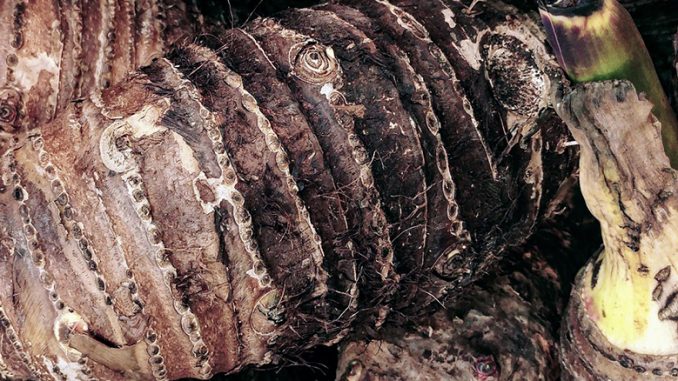
These days, you can find taro gracing the menus of restaurants, boba shops, and coffeehouses alike—but the sweet root has a legacy that can be traced back as far as 2,500 years.
BY EMILY JOY MENESES
SPECIAL TO BARISTA MAGAZINE ONLINE
Cover photo sourced from Pixabay

I grew up in a predominantly Asian American community in Southern California—and although both of my parents came from the Philippines, I was lucky enough to be surrounded by not just their cuisine, but virtually all kinds of Asian food: Taiwanese, Korean, Japanese, Thai, Indian … the list goes on and on.
And thus, boba shops played an integral role in my upbringing; my friends and I would linger in their lobbies the way people in other communities might inhabit coffeehouses, and our after-school fundraisers were usually held in vibrant tea shops that sold fruit slushies and milk tea laced with aloe, lychee jelly, black sugar boba, and more.
One of my favorite flavors to have was taro: an ingredient that lent any beverage that it touched its distinct, light purple color. Nowadays, taro root is still a popular ingredient at boba shops and coffeehouses alike—but few know that its legacy can be traced back as far as 2,500 years.
Taro root originated in Southeast Asia in the Bay of Bengal. The region is in the northeastern part of the Indian Ocean, bordered by India on the west, Bangladesh on the north, and Myanmar and India’s Andaman and Nicobar Islands on the east. The Polynesians carried the root throughout Oceania, until it eventually became a staple food throughout Asia, Africa, Hawaii, and the Caribbean.
Taro’s sweet, potato-like flavor makes it a popular ingredient for both sweet and savory recipes: Egyptian kolkas feature the ingredient as a stew laden with garlic and cilantro, and Vietnamese chè khoai môn is a sweet taro pudding made with taro, sticky rice, and a hint of pandan. Many also know of poi: a sweet, creamy, native Hawaiian dessert made by mashing cooked taro root with a papa ku‘i ‘ai (a wooden pounding board) and pohaku ku‘i ‘ai (a carved basalt pestle).
Poi is a cornerstone of Hawaiian culture, and beyond its delicious flavor, the food represents Hawaii’s deep spiritual connection to the taro plant. Taro was a source of sustenance for the early Polynesian settlers, and Hawaiians associate the root with the story of Haloa. According to ancient Hawaiian legends, Wakea (the father of Heaven) and Papahanaumoku (the mother of Earth) gave birth to their first baby, named Haloa, but the baby was stillborn—and as the baby was buried in the ground, the taro root sprouted, and grew to become a staple food of the Hawaiian people.
These days, you can find taro gracing the menus of restaurants and cafés around the world—and still, the question stands: How does taro taste with coffee? Here in Los Angeles, it’s fairly easy to find a taro latte, subtly enriched with the root’s earthy, nutty, and almost marshmallow-like flavor. It’s my go-to when I want a sweet treat that reminds me of my childhood, spent casually and unknowingly enjoying some of the world’s most magical flavors.

ABOUT THE AUTHOR
Based in Los Angeles, Emily Joy Meneses (she/her) is a writer and musician passionate about culture and collective care. You can regularly find her at Echo Park Lake, drinking a cortado and journaling about astrology, art, Animal Crossing, and her dreams. Explore her poetry, short stories, and soundscapes on her website.

